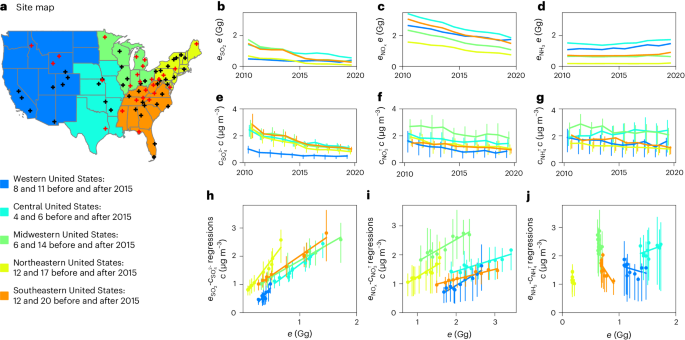2024-08-22 ミシガン大学
<関連情報>
- https://news.umich.edu/u-m-research-forecasts-warmer-rainier-winter-storms-ahead-for-great-lakes-region/
- https://agupubs.onlinelibrary.wiley.com/doi/10.1029/2024GL109890
五大湖地域における寒冷期中緯度サイクロンの歴史的傾向 Historical Trends in Cold-Season Mid-Latitude Cyclones in the Great Lakes Region
Abby Hutson, Ayumi Fujisaki-Manome, Ryan Glassman
Geophysical Research Letters Published: 15 August 2024
DOI:https://doi.org/10.1029/2024GL109890

Abstract
The Great Lakes Region (GLR) of North America is at the intersection of multiple extratropical cyclone (ETC) tracks, and the region’s cold-season climate is heavily influenced by the large temperature gradients and intense precipitation associated with these cyclones. The goal of this study is to understand how ETCs are changing within a warming climate. Historical GLR cyclone characteristics from 1959 to 2021 are examined using a storm tracking algorithm and the ERA-5 atmospheric reanalysis. Of the 886 cyclones identified, half are the large long-track cyclones that are typically included in ETC studies, and half are smaller short-track cyclones that, while not always considered in ETC studies, still have an important impact on the GLR with significant precipitation trends. While all cyclones exhibit strong interannual variability, storm trajectories appear to be migrating northward and, most notably, the cyclones are becoming warmer and wetter at a rate faster than the background climate.
Key Points
- Cold season extratropical cyclones that pass through the Great Lakes region are shifting to more northern tracks
- The number and intensity of Great Lakes cyclones do not show an increasing trend
- Great Lakes extratropical cyclones are warming and are increasing in moisture at a rate faster than the background climate
Plain Language Summary
Winter weather patterns in the Great Lakes Region of the United States are driven by large-scale weather systems known as “extratropical cyclones.” Even with a warming climate, the Great Lakes Region experiences highly variable winters, with cold-air outbreaks, extreme snowfall, and mild temperatures all possible from year to year. This study uses historical analyzed atmospheric data to identify and track extratropical cyclones that pass through the Great Lakes Region in order to understand how the cyclones have changed along with our changing climate. We find that the airmasses within the cyclones have increased in moisture and warmed up faster than the overall climate. We also find that the cyclone tracks have shifted northward, implying that the frequency of warm temperatures and heavy rainfall in the wintertime is increasing for the lower portion of the Great Lakes.



